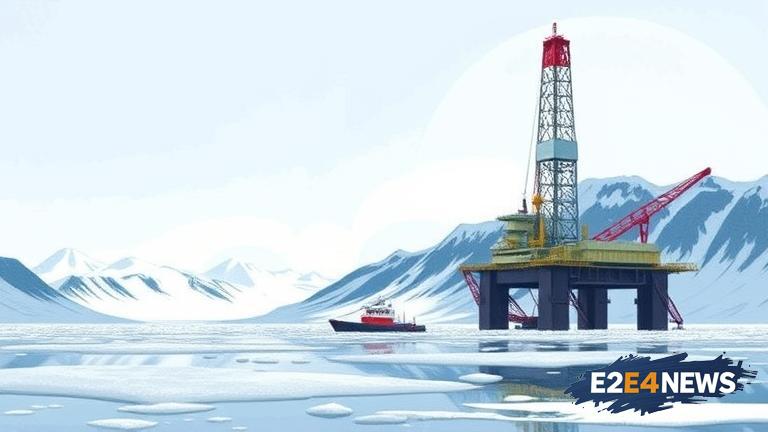The Alaska Industrial Development and Export Authority (AIDEA) has recently announced its decision to proceed with plans to drill in the Arctic National Wildlife Refuge, a move that has been met with both support and opposition from various stakeholders. The refuge, which is home to a diverse range of wildlife, including caribou, polar bears, and migratory birds, has been a topic of controversy for decades. Proponents of drilling argue that it will bring much-needed economic benefits to the state, including job creation and revenue generation. However, environmental groups and indigenous communities have expressed concerns over the potential impact of drilling on the fragile ecosystem and the risk of oil spills. The AIDEA’s decision is seen as a significant step towards realizing the long-held goal of extracting oil from the refuge, which is estimated to hold billions of barrels of oil. The plan involves drilling in the coastal plain of the refuge, which is considered one of the most sensitive and pristine areas of the Arctic. The project is expected to involve the construction of roads, pipelines, and other infrastructure, which could have a significant impact on the environment. Despite the concerns, the AIDEA has assured that it will take all necessary precautions to minimize the impact of drilling on the environment and ensure that the project is carried out in a responsible and sustainable manner. The decision has been welcomed by the oil and gas industry, which sees it as an opportunity to tap into the vast oil reserves of the Arctic. However, it has been met with opposition from environmental groups, who argue that the risks associated with drilling in the refuge outweigh any potential benefits. The issue has also sparked debate over the role of the federal government in regulating drilling activities in the refuge. The Trump administration had previously opened up the refuge to drilling, but the decision was met with legal challenges and opposition from environmental groups. The Biden administration has since reversed the decision, but the AIDEA’s plan has raised questions over the future of drilling in the refuge. The project is expected to be subject to rigorous environmental impact assessments and regulatory approvals before it can proceed. The AIDEA has assured that it will work closely with stakeholders, including indigenous communities and environmental groups, to ensure that the project is carried out in a responsible and sustainable manner. The decision has significant implications for the state of Alaska, which is heavily reliant on the oil and gas industry for revenue. The project is expected to generate billions of dollars in revenue for the state and create thousands of jobs. However, it also raises concerns over the long-term sustainability of the industry and the impact of drilling on the environment. The AIDEA’s plan has sparked a wider debate over the future of the oil and gas industry in Alaska and the need for the state to diversify its economy. The project has also raised questions over the role of the federal government in regulating drilling activities in the Arctic and the need for stronger environmental protections. The decision is seen as a significant test of the Biden administration’s commitment to protecting the environment and addressing climate change. The AIDEA’s plan has been welcomed by some as a necessary step towards realizing the economic benefits of drilling in the refuge, but it has been met with opposition from others who argue that the risks associated with drilling outweigh any potential benefits. The project is expected to be subject to ongoing scrutiny and debate as it proceeds through the regulatory approval process. The AIDEA has assured that it will take all necessary precautions to minimize the impact of drilling on the environment and ensure that the project is carried out in a responsible and sustainable manner. The decision has significant implications for the state of Alaska and the wider debate over the future of the oil and gas industry in the Arctic.
